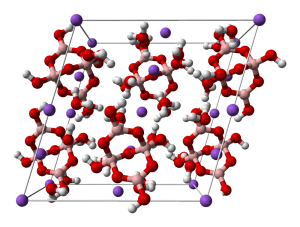How to make materials “flame retardant”?
So-called flame retardants modify substances in such a way that they are or become fire-resistant or flame-retardant.
Definition:
Flame retardants (or fire retardants) are substances that restrict, slow down or prevent the spread of fires. Flame retardants are used wherever there are potential ignition sources, e.g. in electronic equipment (electrical short-circuit), building materials, decorative materials, upholstered furniture, carpets and similar. Here you will find application examples.
Mode of action:
Physical processes work by cooling (endothermic processes) or diluting the substrate and the combustible gases (aluminium and magnesium hydroxide) or by forming a protective layer that protects the substrate from heat and oxygen attack (phosphorus and nitrogen compounds).
Chemical processes that take place in the gas phase prevent the combustion process by removing the energy-rich H and OH radicals from the halogen hydrogen acids, antimony trioxide and fragments of phosphorus compounds originating from flame retardants (“flame poisoning”).
In the solid phase, the flame retardant causes the formation of a carbon layer on the surface of the polymer by dehydration, formation of double bonds which form a carbon layer by cyclization and cross-linking (phosphorus and nitrogen compounds and intumescent systems).
Types of flame retardants:
In general, there are four types of flame retardants:
Additive flame retardants: The fire retardants are incorporated into the flammable substances as additives.
Reactive flame retardants: The substances themselves are part of the material (see also polymerization) – see the contribution to the new formula of intrinsically flame retardant polyamides.
Inherent flame retardancy: The material itself is flame-retardant.
Coating: The fire retardant is applied from the outside as a coating.
An example:
Coating: Normally flame-retardant substances obtain their flame-retardant effect through impregnation. This impregnation is very effective, but is lost through washing and/or humidity.
Reactive flame retardancy: Permanently flame-retardant materials achieve their effect through a special molecular structure. Production is significantly more expensive, which also explains the price differences between the two product groups.

Some flame retardants are composed of natural components such as borax, iron salts or carbonates (soda). Natural flame retardants pose no additional health risk.
However, flame retardants containing phosphorus or halogen (bromine, chlorine) are also used. They can enter the organism via skin contact and damage the nervous system. They are also very difficult to break down naturally and accumulate in fatty tissue, breast milk and house dust. In the event of fire, toxic dioxins are also formed.
In this respect, chlorinated and brominated flame retardants should always be avoided in living areas!
